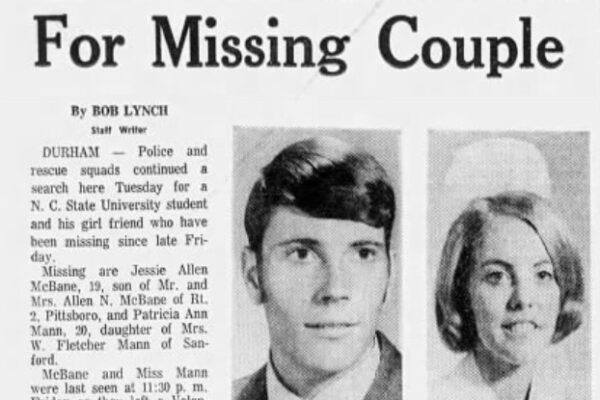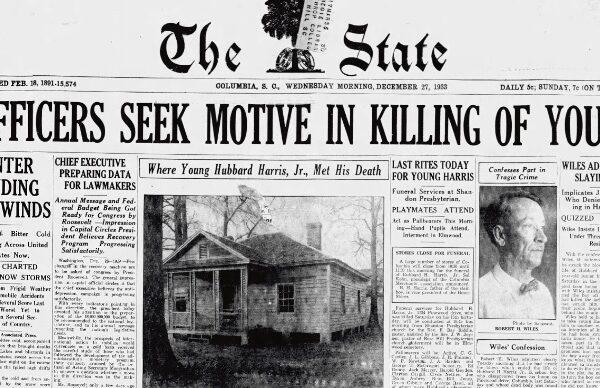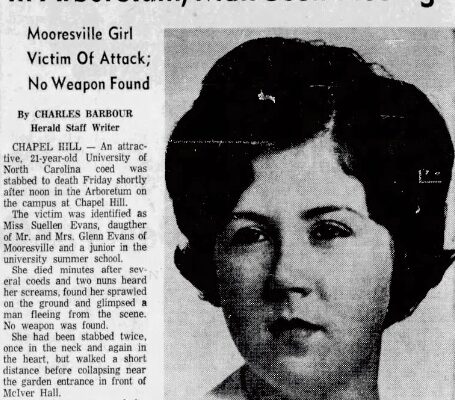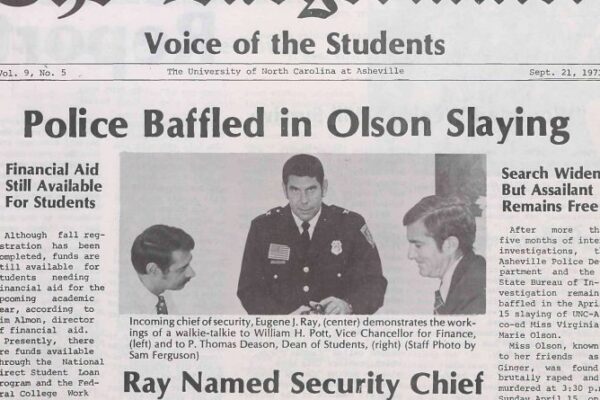November is Alzheimer’s Disease Awareness Month, so for this episode I wanted to focus on cases that involve senior citizens. Alzheimer’s is a progressive, deadly brain disease for which there is no cure, and it is not a normal part of healthy aging, according to Johns Hopkins Medicine. The site explains that researchers are still working to discover the root cause of the disease, but it is widely believed to be due to a buildup of misfolded proteins between nerve cells, which causes brain damage. Symptoms include memory loss, loss of spontaneity and sense of initiative, repeating questions, wandering and getting lost, losing things and misplacing them in odd places, mood and personality changes, and more.
Here are a few other facts from the Alzheimer’s Association:
There are more than 6 million Americans living with Alzheimer’s Disease with 3 million cases diagnosed each year. It is deadlier than breast cancer and prostate cancer combined. It is most prevalent in women and Black Americans. 11 million Americans act as unpaid caregivers for a loved one diagnosed with Alzheimer’s. Fewer than 1 in 5 Americans are familiar with mild cognitive impairment, which can be an early stage of Alzheimer’s.
We often hear the words dementia and Alzheimer’s used interchangeably. I know I’ve done it myself. But I wanted to explain the difference. According to the UCLA School of Medicine, dementia is a general term used to describe a set of symptoms that affect cognitive abilities, memory, thinking, and behavior. It’s not a specific disease but rather an umbrella term for a group of symptoms. Alzheimer’s disease is the most common type of dementia, accounting for the majority of cases. It is a progressive neurodegenerative disorder that primarily affects memory and cognitive functions.
While Alzheimer’s disease is the most common, there are several other causes of dementia, including but not limited to vascular dementia, Lewy body dementia, and frontotemporal dementia.
The Silver Alert System was created in 2006 in Colorado. Currently 28 states, including North Carolina have this system in place. A Silver Alert works much like an Amber Alert. The missing person incident is reported to the local police. Personal health information may be necessary, and it should show threat the person (age 60 or older, usually) suffers from dementia or is otherwise mentally impaired. After the initial verification, the local police inform the state agency tasked to issue alerts. This alert is then displayed on highway signs and broadcast on radio and televisions. The difference between an Amber Alert and a Silver Alert, though, is that an Amber Alert will immediate interrupt regularly scheduled programming, while a Silver Alert won’t.
One other alert that you may hear about is a Missing Endangered Alert, and this is usually issued when a person with a non-medical cognitive impairment is reported missing. The person must be reported to law enforcement within 72 hours, and there has to be a risk of potential abuse, risk of physical harm, neglect or exploitation.
South Carolina’s alert system is a bit different from North Carolina’s—as it appears to be called an Endangered Person Advisory. This was signed into law by the governor of South Carolina in 2010, and on the SLED website it states: “The purpose of the Endangered Person Notification System, or EPNS, is to provide a statewide system for rapid dissemination of information regarding a missing person who is believed to be suffering from dementia or some other cognitive impairment.”
The website sled.sc.gov/endangered also states:
If the Missing Persons Information Center at the South Carolina Law Enforcement Division receives a report from a local law enforcement agency that involves a missing person who is believed to be suffering from dementia or some other cognitive impairment, for the protection of the person from potential abuse or other physical harm, neglect, or exploitation, the center shall issue a notification providing for the appropriate dissemination regarding the person. The request has to be from a law enforcement agency.
The EPNS will then notify a group of state agencies, local broadcasters and other media outlets that have agreed to rapidly disseminate an Endangered Person Advisory to the public to assist in the recovery only when the criteria are met and there is enough information available.
Today, there are also several counties in South Carolina that employ the use of Project Lifesaver, a program designed to safeguard members of the community who are at risk from wandering, including senior citizens. The program was founded in 2007 and funded through the county’s local Pilot Club. It is the only organization that is allowed to electronically track human beings. The concept was inspired by the Stokes County Mountain Rescue, which provided hikers and campers who entered the state park a transmitter in case they got lost while on their travels within the park. The Rescue service would collect the transmitters from the guests when they left the park. Project Lifesaver adopted this idea, and with the Federal Government stating Project Lifesaver could electronically track “at risk” wanderers, the program was born. To enroll in the program, a caregiver contacts Project Hope, who is in charge of client management, and lets them know they are interested in enrolling a loved one in the program. If a client wanders off from their caregiver, the family or caregiver can then call a predetermined number and activate Project Lifesaver. Responding officers will use their training, equipment, and knowledge of the program to bring that loved one home. Presently in South Carolina, Project Lifesaver agencies are in the following counties: Richland, Aiken/N. Augusta, Horry/Myrtle Beach, Charleston, Lee, Oconee, Chester, Cherokee, Darlington, Orangeburg, and Sumter.
On Episode 18 of this podcast, Missing Runners in North Carolina, I shared the story of Spencer resident Rick Travis, a 66-year-old man who disappeared after heading out for a run on one of his normal routes. An experienced marathoner, Rick had also been diagnosed with a mild cognitive dysfunction memory loss. While a Silver Alert was issued quickly, Rick wasn’t found until almost a year later. I’ll link this episode in the show notes if you haven’t listened to it yet.
There are currently three active Silver alerts in North Carolina. The first one was issued on September 4 of this year. James Henry Sorenson is a 68-year-old white male who stands around five feet 10 and weighs 143 pounds. James is believed to be suffering from dementia or Alzheimer’s. He has short, brown curly hair and blue eyes. He was last seen wearing a black t-shirt, blue pants, and tennis shoes. He was last seen near Brookshire Place in Asheville. Anyone with information about James Sorenson should call S. Ball at the Asheville Police Department at 828-252-1110.
The next Silver Alert was issued for Bruce George Carr on September 19 of this year. He is also believed to be suffering from dementia or Alzheimer’s. Bruce is a 77-year-old white male who stands five feet eight inches tall and weighs around 140 pounds. He has long white hair and brown eyes. He was last seen at Mission Hospital in Asheville, where he left on foot. At the time he went missing, he was wearing tan shorts, black socks, a blue shirt and a hat. His possible location now could be around Pritchard Park or the River Arts District. If you have any information about Bruce Carr, please call Officer C. Watkins at the Asheville Police Department at 828-782-0655.
And finally, 84-year-old Caleb Lowe went missing from Wilkes County on October 1 of this year. He is also believed to be suffering from dementia or Alzheimer’s. Caleb is five feet eleven inches tall and weighs around 200 pounds. He has short grey hair and blue eyes. He was last seen on Mars Mountain Place in Boomer, North Carolina, driving a 2021 white Nissan Van with the license plate HLW-1325. Anyone with information about Caleb Lowe’s whereabouts should call Lt. Derrick Taylor at the Wilkes County Sheriff’s Office at 336-452-4632.
On November 6, 2004, 68-year-old Young Chang went missing from Mount Pisgah Family Care Home in Candler, North Carolina. Young had only moved into the home three days prior, November 3, due to the development of the early stages of Alzheimer’s. He had previously lived in the Atlanta, Georgia area. On the same day as the initial disappearance from the care facility, which investigators believed was simply due to Young having wandered off, he was spotted in the Pisgah Valley Market. Officers brought a dog team to the market, where the scent of Chang was located, and followed to a nearby mobile home park. However, he was not there, and the search continued without another solid lead. The biggest concern investigators had at the time was the environment where Young Chang had gone missing. Candler, located near Asheville, consisted of “steep and rough” terrain, according to the chief of the Upper Hominy Volunteer Fire and Rescue Department, Steve Hensley. The temperature was also extremely cold, especially at nighttime. This made searching for the senior citizen more difficult. At the time, the local authorities believed someone may have given Young a ride out of the area, but no one ever came forward with information. He was a native of Korea and spoke very little English.
This case had assistance from five fire departments, dog teams from three police departments, and the North Carolina Highway Patrol. The majority of the search, however, was conducted by the Buncombe County Sheriff’s Department. Detective Roger Watson from this department said at the time “We’ve looked everywhere… the airport, truckstops, bus stops, everywhere.” Helicopters searched the area, and police followed various leads that would pop up as the weeks since Young disappeared went on. They investigated every possible sighting and any information they received about what may have happened. Those involved in the case were sure that Chang was driven to the market where he was last seen, and hoped to find whoever may have given him this ride.
Chang’s son, Charles Chang, was on military deployment at the time of the disappearance. He was stationed in Korea, where Young Chang was originally from. Charles, a major in the Army at the time and an Iraq war veteran, was only home for a month and spent the entire 30 days looking for his father. When interviewed by Asheville Citizen-Times on November 8, 2004,Charles said “There is no word to describe the feeling of knowing that he may be out there somewhere cold and hungry.” Charles and his family set up a $50,000 reward for the location of Young Chang. Unfortunately, the missing 68-year-old was never found. What happened to the Alzheimer’s patient after he wandered off is still a mystery to this day, and 19 years later, it is likely to remain a cold case. At the time he went missing, Young Chang was wearing a gold-nugget patterned Seiko watch on his left wrist and possibly white pants, a white short-sleeved polo shirt, a blue denim pullover or sweatshirt, and house slippers or loafers. Anyone with information is asked to call the Buncombe County Sheriff’s Department at 828-255-5555.
Heddie Dawkins was an 81-year-old woman living in High Point, North Carolina, who went missing on the morning of August 24, 2022. Heddie’s daughter, Rhonda Neal, went to check on her mom at 10:30 a.m. and found her room vacant. A Silver Alert was issued, and that call marked the beginning of a week-long search throughout the community to find her. At least 100 police officers and volunteers offered their time to try and bring Heddie Dawkins home. Dawkins struggled with Alzheimer’s. High Point Police Captain Patrick O’Toole told Fox News that her severe dementia could make her neighborhood unfamiliar to her and that strangers scared her.
Police found video footage of Heddie leaving her house, which she shared with her daughter Rhonda, at 1:30 a.m. through her doorbell camera. She was still in her pajamas and slippers when she left. It looked like she walked out of the home and then was trying to figure out how to get back in. Other footage from a neighbor’s doorbell camera showed her farther down the street at around 3:30 a.m. There was blood on her face and head, which police believe were sustained through a fall-like injury. Foul play was not suspected. A runner later reported seeing Heddie around 9 a.m. on a local greenway.
The initial search on Wednesday, August 24, lasted 12 hours, with police officers searching trails, roads, and backyards within a one-mile radius of Heddie Dawkins’s house. Some even implored the use of infrared drones, but nothing was found, and the following three days suffered the same results even after an extended search radius. 60-70 officers were searching for the elderly woman using drones, ATVs, kayaks, motorcycles, and bicycles all trying to cover more ground and lead the search more efficiently. Volunteers distributed missing persons flyers that featured a photo of Heddie, and urged neighbors to thoroughly check any storage buildings or vehicles on their property, review doorbell/surveillance footage, and continue to share the flyers with others.
The case found its first tangible clue in days on Sunday, August 28, when a piece of fabric consistent with the material of Heddie’s pajamas was located. A forensics lab did receive the fabric but was unable to confirm if it was indeed a match.
On Tuesday, August 30, more than 100 volunteers went through surrounding neighborhoods and passed out flyers. People had also started leaving out gift bags with Heddie Dawkin’s name on them. They filled these bags with food and water with the hope that she would find them. Also written on the bags were messages like, “Heddie, stay here. It’s safe here,” so the 81-year-old would feel less afraid. Rhonda Neal told reporters that “…the support has been so overwhelming, seeing this crowd is the only thing that sustains us. That makes us feel like we’re not alone.” Unfortunately, Tuesday was also the last day of the search, as later in the day, police received a call about a body in the woods. The body was found about 1 mile away from where Heddie Dawkins first disappeared, and the case was finally closed.
It took more than a year for the family of South Carolina senior citizen named Joe Hall to find out what happened to their loved one. Joe went missing while camping with family over Memorial Day Weekend in 2021 in Jefferson County, located in Tennessee, about 30 miles east of Knoxville. It appeared he slipped out of bed with $6 in his pocket, no cell phone, and headed outdoors without making a sound. The terrain around the road where Joe disappeared from was described as having heavy vegetation, steep hills, rocky terrain, rivers, and brush.
Joe’s son Randy Hall told the media at the time that they visited Jefferson County for vacations because it’s where Joe had spent the first 14 years of his life. At the time, Joe had been diagnosed with Alzheimer’s for five years and while Randy said his mobility was good other than arthritis, his father was having many issues with his memory.
At the time, 73-year-old Joe stood five feet nine inches and weighed around 260 pounds. He was wearing a green shirt, tan shorts, tennis shoes, and a camoflauge hat. The Tennessee Bureau of Investigation quickly issued a Silver Alert as crews continued to search for him. A driver did report seeing the man walking, and investigators marked that spot with a small orange flag.
The search went cold until almost a year later, when a resident on Shropshire Hollow Road, about two miles from where Joe went missing, was shocked to discover bones his dog had brought into their barn were human. He contacted the Sheriff’s Department and took them to the location of the remains. Dental records later confirmed that Joe Hall had been found.
As you can tell by the cases I’ve talked about today, Alzheimer’s and dementia causes changes in the brain and body that may affect safety. These can include forgetting how to use household appliances, getting lost on one’s own street or neighborhood, becoming easily confused, suspicious or fearful, having trouble with balance, and experiencing changes in vision, hearing, and sensitivity to temperatures or depth perception.
The Alzheimer’s Association has a comprehensive list of home safety tips on their website for caregivers and families of people living with the disease. You can download a full checklist at alz.org, and I’ll put that link in the show notes. Here are a few tips of note:
-Avoid safety hazards in the kitchen. Use appliances that have an automatic shut-off feature. Disconnect the garbage disposal. Discard toxic plants or decorative fruits that may be mistaken for real food. Remove vitamins, prescription drugs, sugar substitutes and seasoning from tables and counters.
-Be prepared for emergencies, Keep a list of emergency phone numbers and addresses for local police and fire departments, hospitals, and poison control helplines.
-Install locks out of sight. Place a latch or a deadbolt either above or below eye level on all doors. Remove locks on interior doors to prevent the person living with dementia from locking themselves in. Keep an extra set of keys hidden near the door for easy access.
-Avoid injury in the bathroom. Install grab bars for the shower, tub, and toilet to provide additional support. Apply textured stickers to slippery surfaces to prevent falls. Consider installing a walk-in shower.
-Secure large furniture. Check that book shelves, cabinets, or large tvs are secured to prevent tipping. Ensure chairs have armrests to provide support when going from a sitting to standing position.











































































